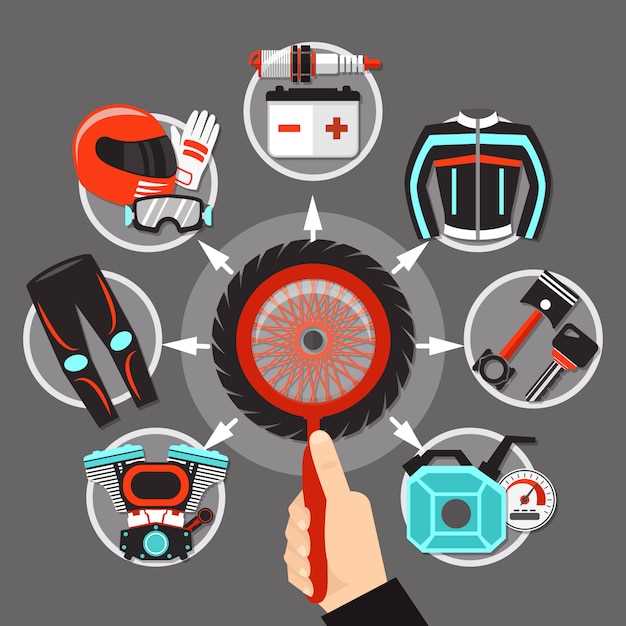
In the high-octane world of rally racing, the margin for error is minimal. Every twist and turn on the track tests not only the skill of the driver but also their preparedness. To navigate the unpredictable challenges of rally stages, safety gear is paramount. Rally drivers must prioritize their personal safety through a combination of specialized equipment designed to mitigate risks and provide maximum protection.
From the rugged terrains to the adrenaline-fueled speeds, the essence of safety in rally driving cannot be overstated. Essential gear includes fire-resistant suits, helmets, and harnesses, all engineered to withstand the brutal realities of motorsport. This article explores the indispensable safety equipment that every rally driver should have, ensuring they remain secure while tackling the exhilarating, yet hazardous, paths of rally racing.
Choosing the Right Helmet for Maximum Protection

Selecting the appropriate helmet is crucial for ensuring the safety of a rally driver. A helmet is not just a piece of gear; it is the first line of defense against head injuries in high-speed environments. When choosing a helmet, several factors should be considered to maximize protection.
Firstly, it is essential to look for helmets that meet or exceed safety standards such as FIA or Snell certifications. These standards signify that the helmet has undergone rigorous testing for impact resistance and durability. A helmet that is not certified may not provide adequate safety in the event of an accident.
The fit of the helmet is equally significant. A properly fitting helmet reduces movement during a race, minimizing the risk of injury. It should feel snug but comfortable, with adequate padding to accommodate the driver’s head shape. Many helmets come with adjustable features to optimize fit.
Another factor is the weight of the helmet. Lighter helmets can reduce fatigue during long races, allowing drivers to maintain focus and control. However, lighter materials should not compromise safety. Advanced composites such as carbon fiber or Kevlar offer both reduced weight and enhanced protection.
Ventilation is also an important consideration. Effective airflow helps maintain comfort and concentration, particularly in the heat of competitive environments. Look for helmets with multiple vents that can be adjusted to suit the driver’s preference.
Finally, consider additional features such as integrated communication systems or face shields. These enhancements can provide practical benefits during a rally, allowing drivers to stay connected with their co-drivers while ensuring maximum visibility and protection.
In conclusion, choosing the right helmet for rally driving involves careful consideration of safety certifications, fit, weight, ventilation, and additional features. Investing in a high-quality helmet is vital for any serious driver seeking maximum protection on the track.
Fire-Resistant Suits: What You Need to Know
In the high-risk environment of rally driving, safety is paramount. One of the essential pieces of gear that every driver should have is a fire-resistant suit. These suits are designed to protect drivers from flames and high temperatures, which can occur during accidents or vehicle malfunctions.
Material and Standards
Fire-resistant suits are typically made from specialized fabrics that have been engineered to withstand extreme heat. The most common materials include Nomex, Kevlar, and other synthetic fibers. These fabrics ensure that the suit does not ignite easily and offers a higher level of protection compared to regular clothing. To ensure quality, always check that the suit meets standards such as FIA 8856-2000 or SFI 3.2A, which are benchmarks for motorsport safety gear.
Design Features
A good fire-resistant suit should offer more than just protection. Look for features such as a high collar, reinforced seams, and multi-layer construction that provide additional safety. Suits should also be lightweight and breathable, allowing for comfort during long drives. Additionally, options with removable liners can enhance versatility and allow for easy maintenance.
Fit and Comfort
Proper fit is crucial for both safety and comfort. A suit that is too loose may snag on equipment, while one that is too tight might restrict movement. Many manufacturers offer sizes tailored specifically for different body types, ensuring drivers can maintain a full range of motion while remaining protected. Always try on different brands and styles to find the best fit for your unique body shape.
Care and Maintenance
To maintain the effectiveness of fire-resistant suits, proper care is essential. Follow the manufacturer’s recommendations for washing and drying, as harsh detergents or high heat can degrade the protective qualities of the material. Regular inspections for wear and tear are also important, as damaged suits may no longer provide adequate protection.
In conclusion, investing in a high-quality fire-resistant suit is a vital aspect of safety gear for rally drivers. By understanding the materials, features, fit, and maintenance, drivers can ensure they are well protected in the event of an emergency, allowing them to focus on their performance on the track.
Importance of Proper Harness Systems in Rally Cars

In rally racing, safety gear plays a crucial role in protecting drivers during high-speed events. One of the most vital components of this gear is the harness system. Proper harness systems are designed to securely hold drivers in place, minimizing movement during sudden impacts or sharp turns. This binding effect helps maintain optimal control over the vehicle, allowing drivers to respond effectively to unpredictable terrain.
A well-designed harness system ensures that the driver remains in the correct position, reducing the risk of injury. In the event of a collision or roll-over, a high-quality harness disperses the forces experienced during an accident, preventing injuries to critical areas such as the neck and spine. Furthermore, the use of a multi-point harness adds additional security compared to a standard seatbelt, as it keeps the driver firmly anchored against the seat.
When selecting a harness system for rally cars, it is essential to consider factors such as quality, adjustability, and compatibility with other safety gear, including racing seats and helmets. A properly fitted harness not only enhances safety but also contributes to overall driver performance. It allows for better concentration on the track by minimizing distractions caused by movement within the cockpit.
In conclusion, investing in a high-quality harness system is imperative for anyone involved in rally racing. These systems are not just add-ons; they are essential safety gear that can significantly reduce the risk of injury and improve overall driving dynamics. Prioritizing proper harness systems is a fundamental aspect of rally racing safety that should never be overlooked.



